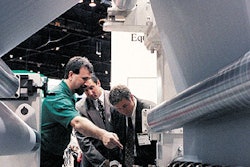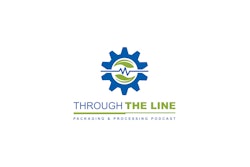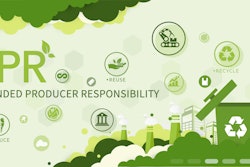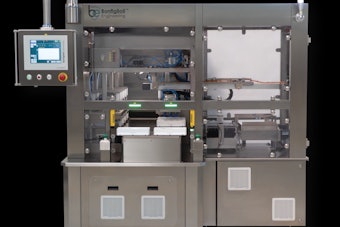To help management understand packaging's significance, Brian Wagner, co-founder and vice president of Packaging and Technology Integrated Solutions (www.ptisglobal.com) offers the following insights:
• PTIS defines product as: Product + packaging + brand equity + experiences + services + sustainability components. These are all linked in the subconscious of the user/consumer. The packaging piece is often undervalued and underutilized by the developer and functions within the brand owner/manufacturer company. The package impacts the product and brand value at the First Moment of Truth (if at retail) and throughout the usage and disposal cycle.
• "Bosses" seldom understand or are experienced in quantifying the value of packaging to the extent needed to explain and defend it. Simple case stories are a great way to share the value of packaging; they need to be simple to tell, factual, and contain data.
• Manufacturing supply chain and R&D personnel should be consulted early in the development process to obtain input, ideas, options, etc. This can save millions of dollars, positively impact speed to market, and provide Intellectual Property protection opportunities.
• Fewer people, simpler processes, and more informal relationships mean that small and medium-sized companies usually innovate and work much better across functions compared to larger companies.
• Consumers buy products. In healthcare, physicians prescribe products, not packages. The package is a critical element of the product and the brand.
• Selling skills are critical. All too often, ideas and the value message are pushed in an organization emotionally. When they get shot down, the individuals pushing the ideas get very frustrated-they eventually stop "selling." Selling to "bosses" is best done by using simple sales skills-asking questions and not selling too early.
PTIS leads "Championing and Selling Your Packaging Ideas" one-day workshops for nonsales personnel. Most of these people have never learned selling skills and don't see themselves as "sales" people. We take them through a simple process of asking questions to learn what is important to their bosses and key stakeholders inside and outside of their companies. When the questions are answered, workshop participants present their solutions, within the context of the need and value to the business.
• The world has changed, and packaging is more important than ever, and leading companies are doing business in new ways. Pharmaceutical and medical companies [need] to develop primary and secondary packaging options early in their development process, addressing consumer insights, channel opportunities, and opportunities in compliance, distribution, branding, dosing, etc. Results include IP protection, speed to market, manufacturing efficiencies, supply chain efficiencies, cost and productivity savings.
• All of the above should link to corporate strategy, marketing strategy, consumer trends and insights, sales channels, procurement strategy, financial goals, etc.
Editor's Note: Wagner says PTIS has also developed a packaging value course taught at Michigan State University. For the fall semester, the course was referred to as: PKG 891 Special Topics: Value Relationships in Packaging (3 credits). Understanding of the packaging value chain from raw material supplier through the consumer and retailer. Value and importance of packaging will be demonstrated through each sector of the value chain. Importance of top- and bottom-line sales and profit contributions. Organizational models and new concepts in packaging. The course is taught by PTIS associate, Dr. Claire Sand. For more information, visit http://www.packaging.msu.edu/online_ma.php.
• PTIS defines product as: Product + packaging + brand equity + experiences + services + sustainability components. These are all linked in the subconscious of the user/consumer. The packaging piece is often undervalued and underutilized by the developer and functions within the brand owner/manufacturer company. The package impacts the product and brand value at the First Moment of Truth (if at retail) and throughout the usage and disposal cycle.
• "Bosses" seldom understand or are experienced in quantifying the value of packaging to the extent needed to explain and defend it. Simple case stories are a great way to share the value of packaging; they need to be simple to tell, factual, and contain data.
• Manufacturing supply chain and R&D personnel should be consulted early in the development process to obtain input, ideas, options, etc. This can save millions of dollars, positively impact speed to market, and provide Intellectual Property protection opportunities.
• Fewer people, simpler processes, and more informal relationships mean that small and medium-sized companies usually innovate and work much better across functions compared to larger companies.
• Consumers buy products. In healthcare, physicians prescribe products, not packages. The package is a critical element of the product and the brand.
• Selling skills are critical. All too often, ideas and the value message are pushed in an organization emotionally. When they get shot down, the individuals pushing the ideas get very frustrated-they eventually stop "selling." Selling to "bosses" is best done by using simple sales skills-asking questions and not selling too early.
PTIS leads "Championing and Selling Your Packaging Ideas" one-day workshops for nonsales personnel. Most of these people have never learned selling skills and don't see themselves as "sales" people. We take them through a simple process of asking questions to learn what is important to their bosses and key stakeholders inside and outside of their companies. When the questions are answered, workshop participants present their solutions, within the context of the need and value to the business.
• The world has changed, and packaging is more important than ever, and leading companies are doing business in new ways. Pharmaceutical and medical companies [need] to develop primary and secondary packaging options early in their development process, addressing consumer insights, channel opportunities, and opportunities in compliance, distribution, branding, dosing, etc. Results include IP protection, speed to market, manufacturing efficiencies, supply chain efficiencies, cost and productivity savings.
• All of the above should link to corporate strategy, marketing strategy, consumer trends and insights, sales channels, procurement strategy, financial goals, etc.
Editor's Note: Wagner says PTIS has also developed a packaging value course taught at Michigan State University. For the fall semester, the course was referred to as: PKG 891 Special Topics: Value Relationships in Packaging (3 credits). Understanding of the packaging value chain from raw material supplier through the consumer and retailer. Value and importance of packaging will be demonstrated through each sector of the value chain. Importance of top- and bottom-line sales and profit contributions. Organizational models and new concepts in packaging. The course is taught by PTIS associate, Dr. Claire Sand. For more information, visit http://www.packaging.msu.edu/online_ma.php.





















